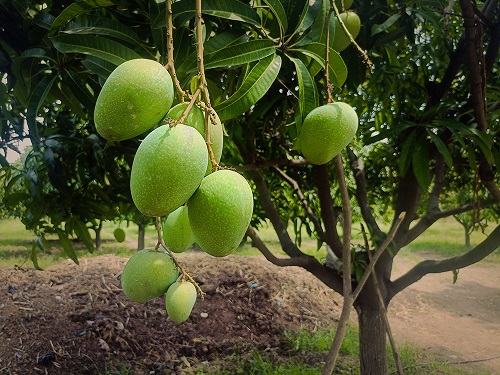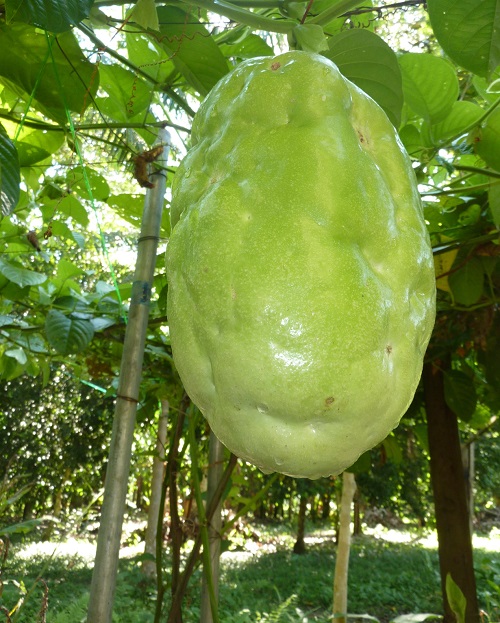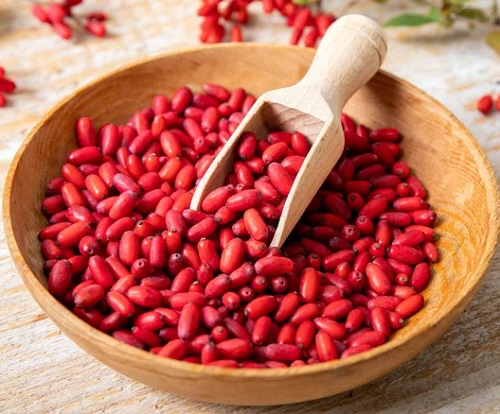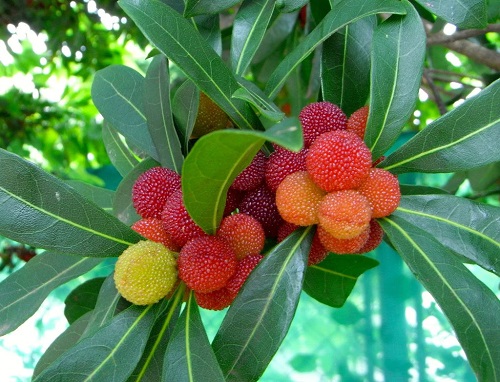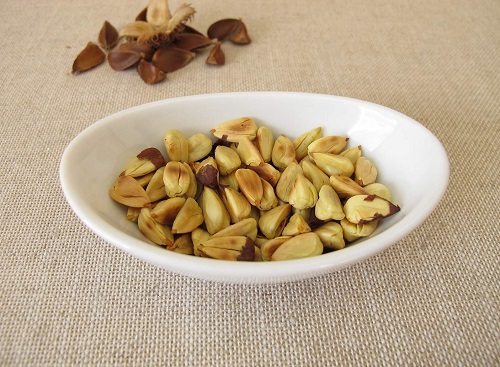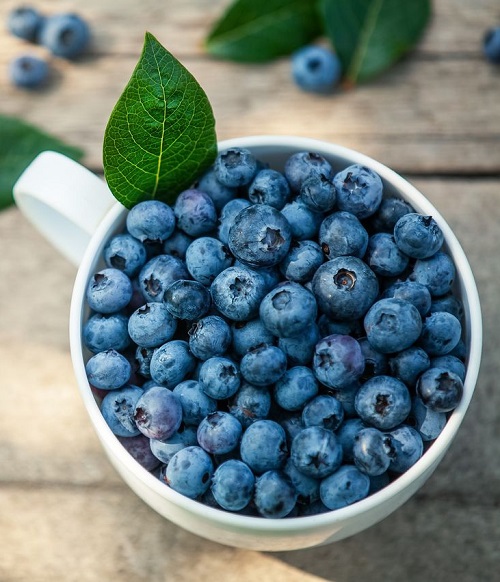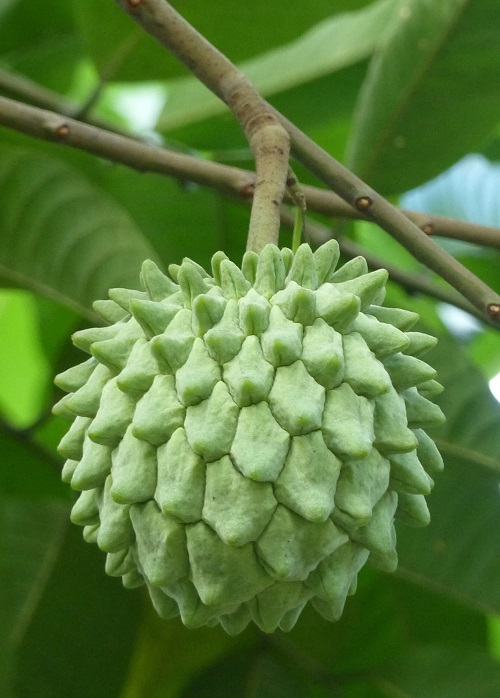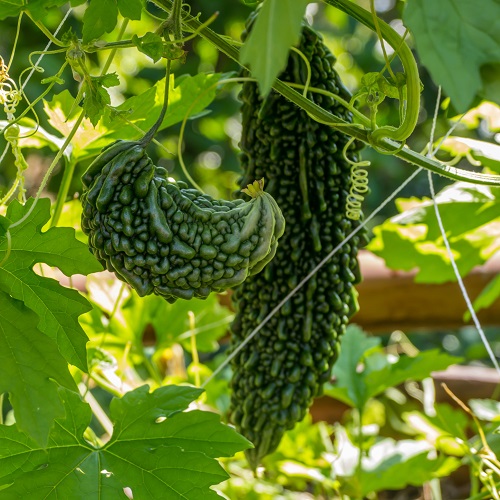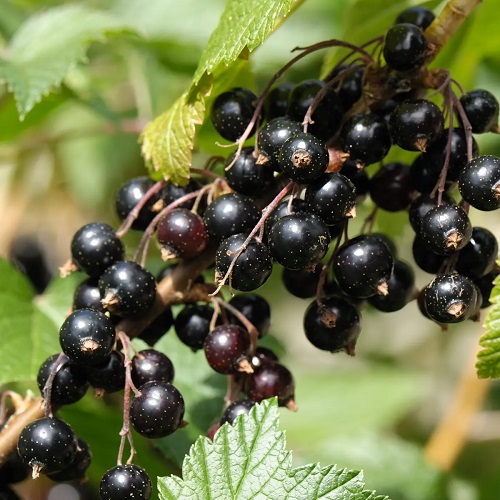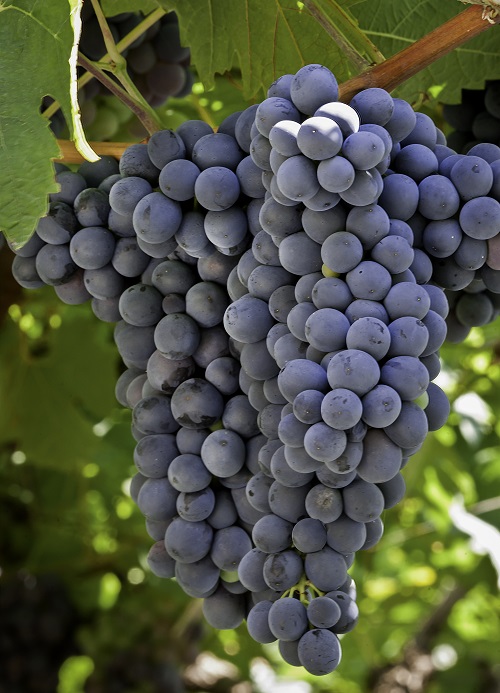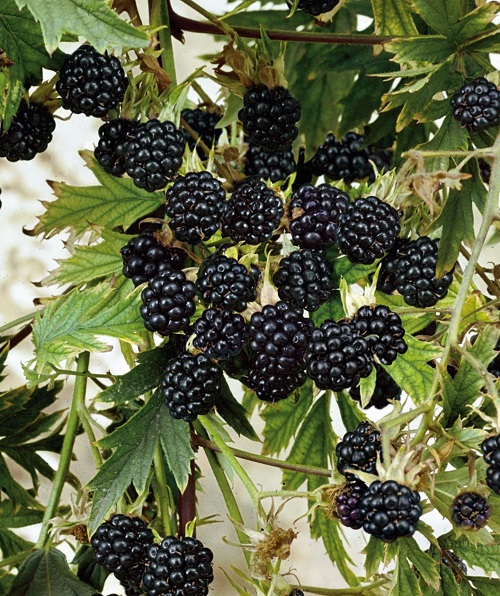Are you ready for a juicy adventure? We’re about to explore the fruity world of Fruits That Start With B!
In this article, we’ll discover Fruits That Start With B – and there are lot many options to choose from. So, grab a notepad, and let’s get started!
Check out the list of Fruits that Start with A, here
Fruits That Start With B
1. Babaco Fruit
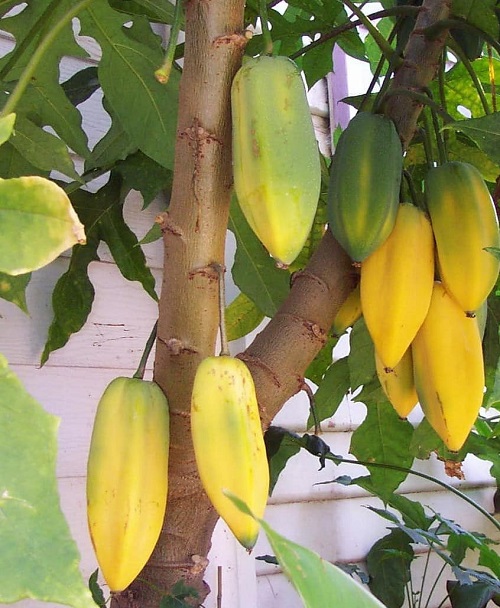
Botanical Name: Vasconcellea × heilbornii
USDA Zones: 9-11
First on the list of fruits that start with B is bacabo. It grows on a shrub-like tree and has a sweet, juicy taste. To grow babaco fruit, plant it in well-draining soil with plenty of sunlight.
2. Bacuri Fruit
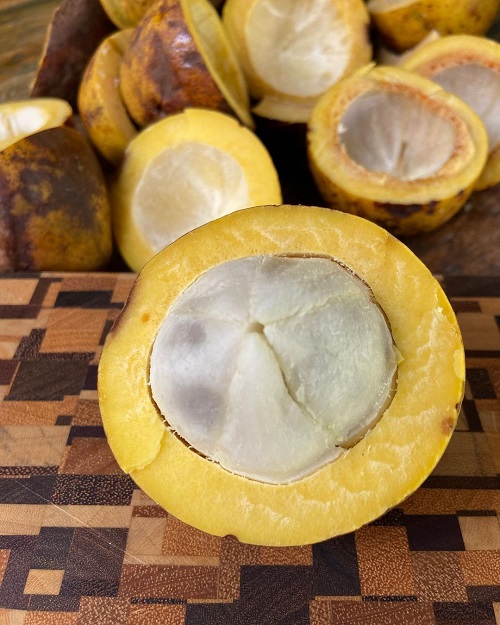
Botanical Name: Platonia insignis
USDA Zones: 10-11
This tropical fruit is native to Brazil and has a tangy, sweet taste. It grows in well-draining soil and with regular watering. The fruit takes several years to mature, so be patient!
3. Bael Fruit
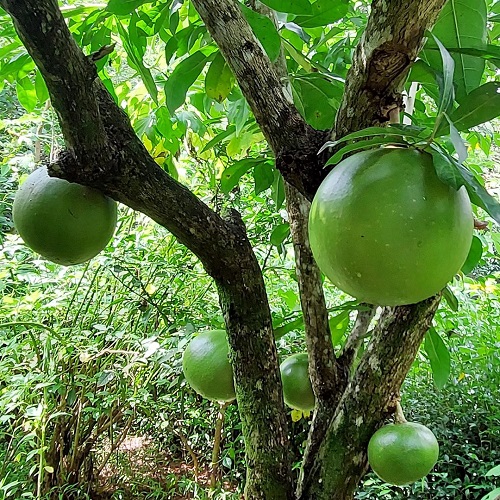
Botanical Name: Aegle marmelos
USDA Zones: 10-11
This fruit that start with B has a hard outer shell and a sweet, sticky pulp inside. To grow, pick a ripe fruit and remove the pulp from it and then dry it before sowing.
4. Balsam Apple
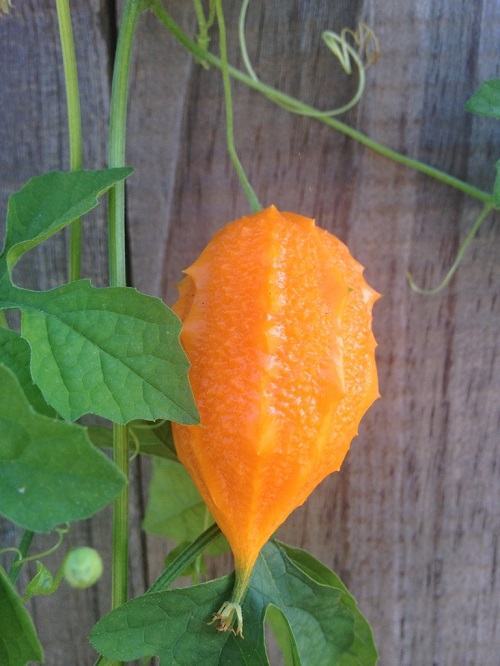
Botanical Name: Momordica balsamina
USDA Zones: 10-11
This fruit is native to Africa and has a bitter taste. It grows on a tropical vine that produces small, oval-shaped fruits with bumpy, green skin.
Here’s all you need to know about How to Grow An Apple Tree in Container
5. Banana

Botanical Name: Musaceae
USDA Zones: 8-11
Now the most obvious fruits that start with B, bananas, are one of the most well-known fruits out there. They’re sweet, creamy, and packed with potassium.
Here is How to Grow Banana Trees
6. Banganapalle Mango
Botanical Name: Mangifera indica ‘Banganapalle’
USDA Zones: 10-11
This variety of mango is native to South Asia and is known for its sweet, juicy taste. To grow Banganapalle mango, plant it in well-draining soil with plenty of sunlight.
Learn How To Grow Mango Tree In A Pot here
7. Baobab Fruit
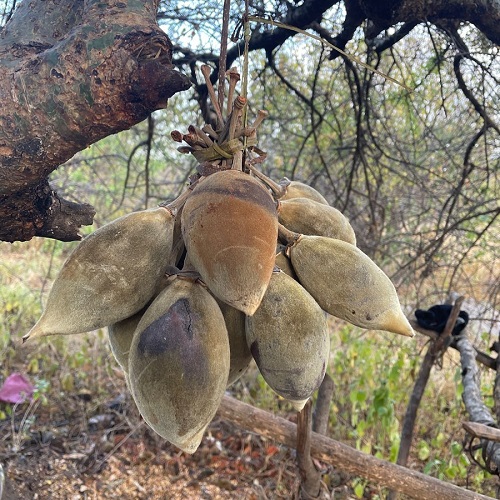
Botanical Name: Adansonia digitata
USDA Zones: 10-12
This fruit is native to Africa and has a tangy, citrusy taste. It grows on a large, iconic baobab tree. And stay healthy in well-draining soil with plenty of sunlight.
Here is How to Grow a Baobab Tree
8. Barbadine Fruit
Botanical Name: Passiflora quadrangularis
USDA Zones: 10-11
Barbadine grows on a tree and is also known as a giant granadilla. This fruit is native to the Caribbean and has a sweet, juicy taste.
9. Barbados Cherries
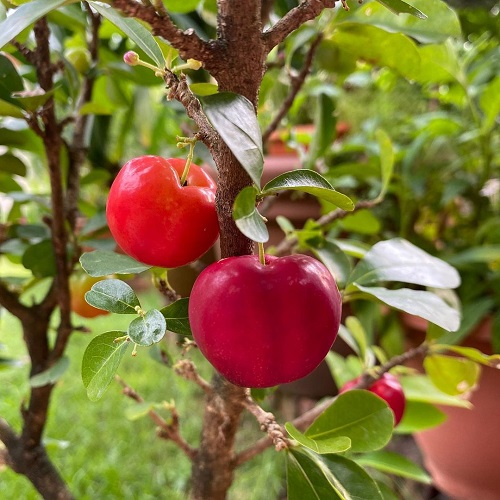
Botanical Name: Malpighia emarginata
USDA Zones: 9-11
Barbados cherries, also known as acerola cherries, are next on the list of fruits that start with B. These small, bright red fruits are packed with vitamin C.
Check out How to Grow Barbados Cherry here
10. Barberry
Botanical Name: Berberis spp.
USDA Zones: 3-8
This small, tart fruit is native to Europe and Asia. It grows on a shrub and is also known as berberis. To grow barberry, plant it in well-draining soil with plenty of sunlight.
11. Batuan Fruit
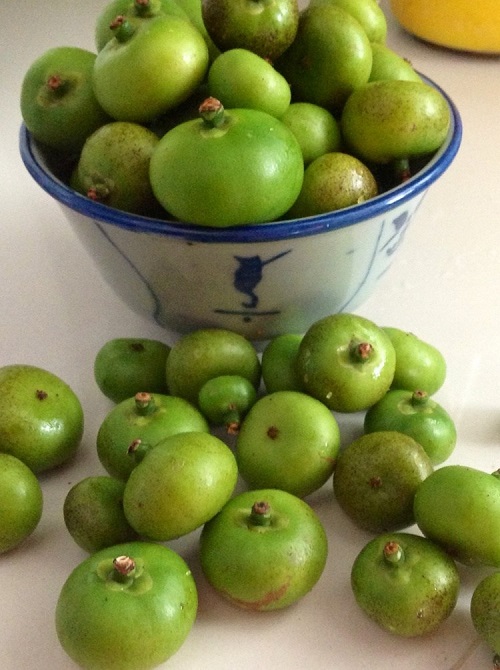
Botanical Name: Garcinia binucao
USDA Zones: 10-11
This fruit is native to Southeast Asia and has a sour, tangy taste. It is also known as wild mangosteen. The fruit takes several years to mature.
12. Bayberry
Botanical Name: Myrica spp.
USDA Zones: 3-8
Bayberry is also known as candleberry. This small, waxy fruit has a sweet, spicy taste. It grows on a shrub.
13. Beach Plum
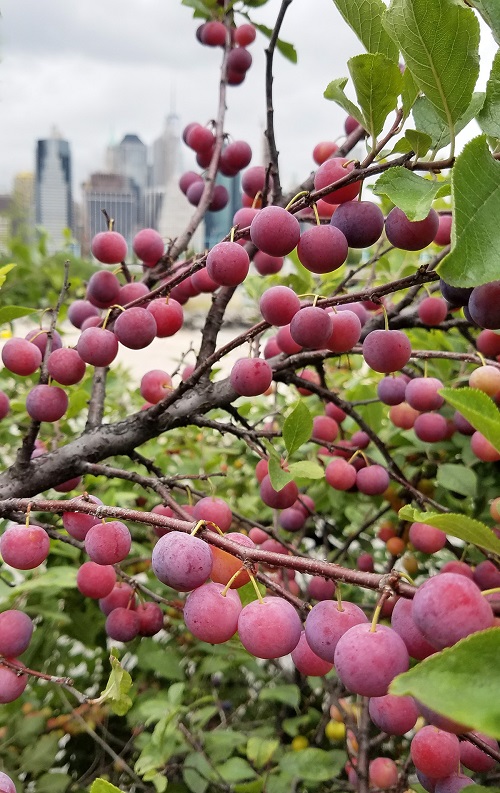
Botanical Name: Prunus maritima
USDA Zones: 3-7
This is another small, sweet fruit that is native to the northeastern United States. To grow beach plums, plant them in well-draining soil with plenty of sunlight.
14. Bearberry
Botanical Name: Arctostaphylos uva-ursi
USDA Zones: 2-7
This small fruit that start with Bis native to North America and is also known as kinnikinnick. It grows on a low, spreading shrub and is often used for medicinal purposes.
15. Beech-Nut
Botanical Name: Fagus grandifolia
USDA Zones: 3-9
This small, nutty fruit has a sweet, buttery flavor and can be eaten raw or roasted. To grow beech nut, plant the tree in well-draining soil with plenty of sunlight.
16. Bell Pepper
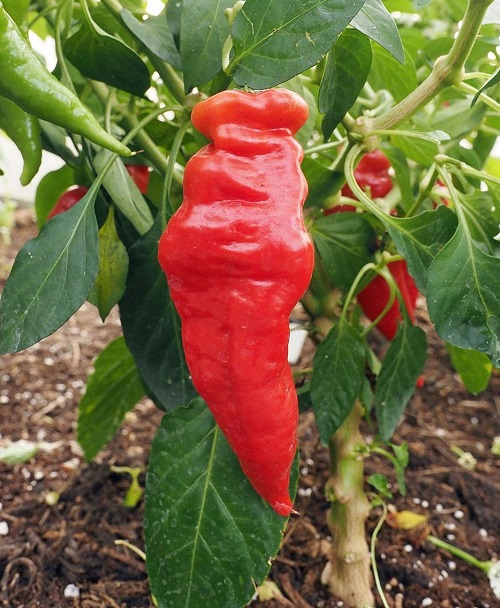
Botanical Name: Capsicum annuum
USDA Zones: 9-11
This colorful fruit that start with B is native to Central and South America and is also known as a sweet pepper. It comes in a variety of colors.
Learn Growing Bell Peppers in Pots and Containers here
17. Betel Nut
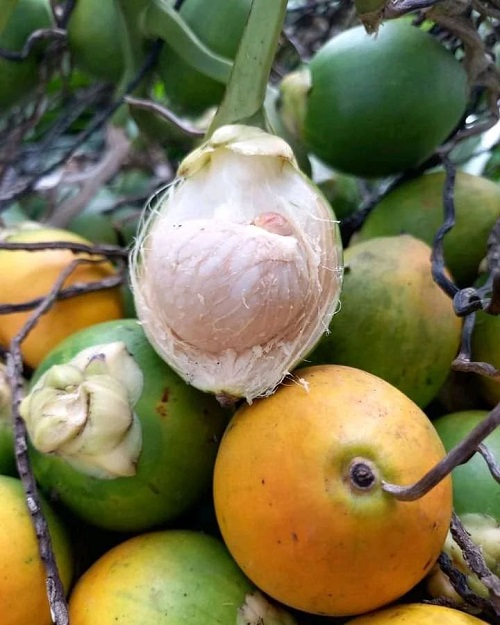
Botanical Name: Areca catechu
USDA Zones: 10-11
Technically, betel nut isn’t a fruit, but it’s still worth mentioning. It’s actually the seeds of the fruit of the areca palm and is commonly chewed in parts of Asia.
18. Bignay
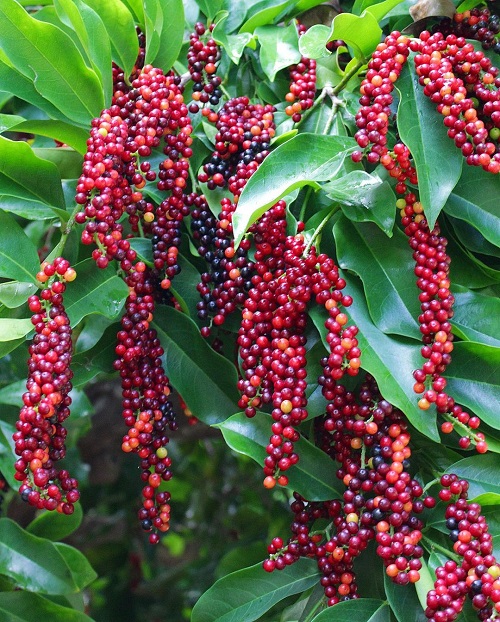
Botanical Name: Antidesma bunius
USDA Zones: 10-11
This small, tart fruit is native to Southeast Asia and is often used in cooking. It’s high in vitamin C and has a unique, tangy flavor.
19. Bilberry
Botanical Name: Vaccinium myrtillus
USDA Zones: 3-8
Bilberries are smaller and darker than blueberries, so their appearance can help you to differentiate between both berries.
20. Bilimbi Fruit
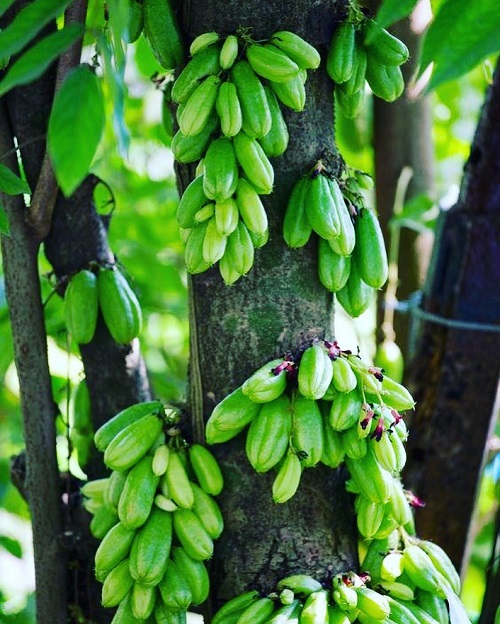
Botanical Name: Averrhoa bilimbials
USDA Zones: 10-12
Bilimbi fruit is also known as cucumber tree or tree sorrel. This fruit is native to Southeast Asia and is commonly used in cooking.
21. Biriba Fruit
Botanical Name: Rollinia deliciosa
USDA Zones: 9-11
This fruit that start with B is also popular as Brazilian pawpaw. It is native to South America and has a sweet, custard-like flavor.
22. Bitter Gourd
Botanical Name: Momordica charantia
USDA Zones: 9-11
Bitter gourd is a tropical vine that is widely cultivated for its edible fruit, which is also known as bitter melon. The fruit has bumpy, green skin and a bitter taste.
Learn about Growing Bitter Gourd in Pots here
23. Black Apple
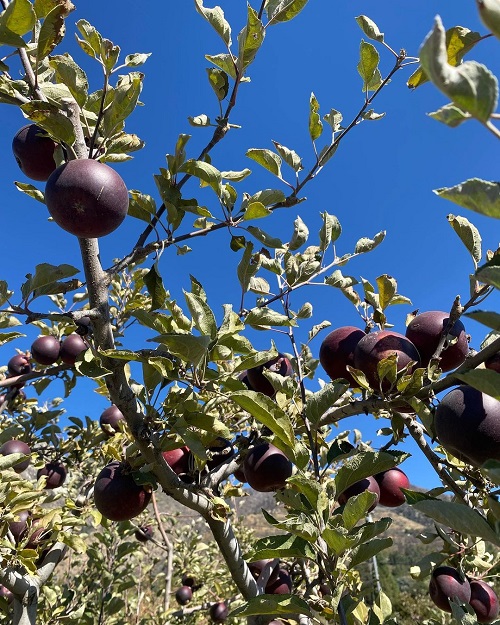
Botanical Name: Syzygium cumini
USDA Zones: 10-12
Black apple, also known as jambul or java plum, this fruit is native to South Asia and is commonly used in jams, jellies, and desserts.
24. Blackberries
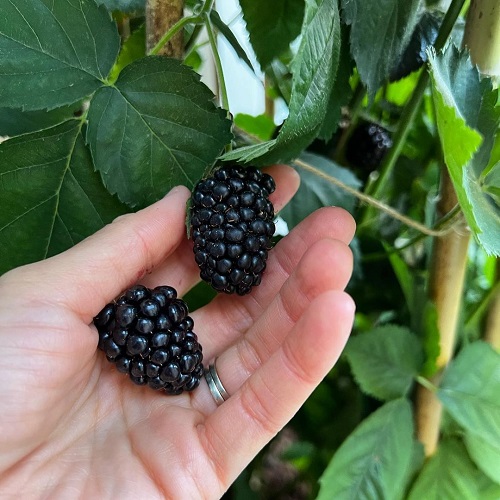
Botanical Name: R. fruticosus L.
USDA Zones: 4-9
If you’re a fan of tart flavors, blackberries might just be your new favorite fruit. They’re high in fiber and vitamin C, and they make a great addition to your garden.
Here is How to Grow Blackberries in Pots Easily at Home
25. Black Cherry
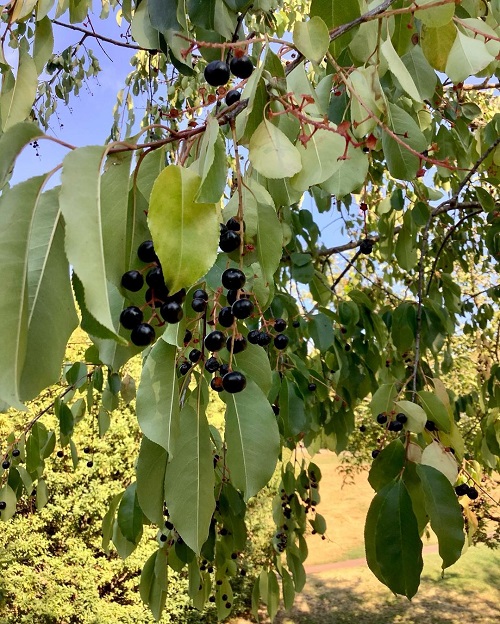
Botanical Name: Prunus serotina
USDA Zones: 3-9
This fruit that start with B is native to North America and has a sweet, tangy flavor. It grows on a tree and is best suited to temperate climates.
26. Blackcurrant
Botanical Name: Ribes nigrum
USDA Zones: 3-9
These small and dark blackcurrants are commonly found in Europe and North America. If you’re planning to grow blackcurrant and are worried about space constraints.
27. Black Grapes
Botanical Name: Vitis vinifera
USDA Zones: 6-9
This fruit is a cultivar of the common grape and is commonly used for making wine, juice, and raisins. It grows on a vine and is best suited to temperate climates.
Learn How to Grow Grapes in Pots & Care here
28. Black Mulberry
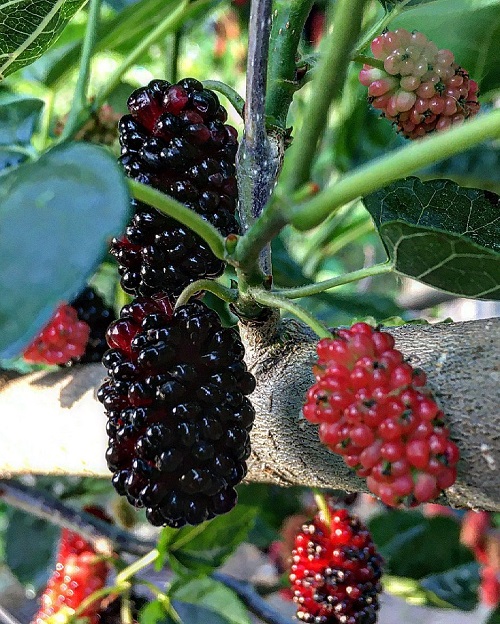
Botanical Name: Morus nigra
USDA Zones: 6-9
This fruits that start with B is native to western Asia and has a sweet, tart flavor. These scrumptious mulberry trees thrive well in temperate climates.
Here is How to Grow Mulberry Tree in a Pot
29. Black Raspberry
Botanical Name: Rubus occidentalis
USDA Zones: 5-8
Black raspberry is a species of raspberry native to North America. It is a deciduous shrub that typically grows 3-6 feet tall and produces dark purple-black berries.
Learn Growing Raspberry in Pots here
30. Black Sapote
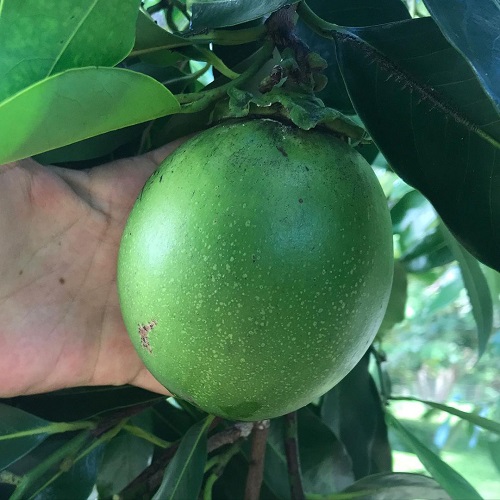
Botanical Name: Diospyros digyna
USDA Zones: 10-12
Black Sapote, also known as chocolate pudding fruit, this fruit is native to Mexico and has a creamy, chocolate-like flavor.
Check out our guide on How to Grow Black Sapote and Care here
31. Blood Lime
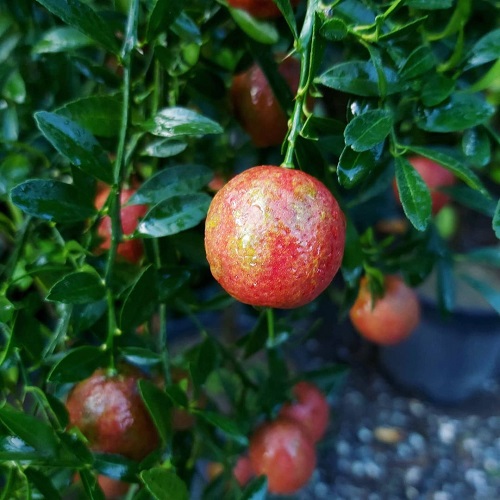
Botanical Name: Citrus x ‘Australian Blood Lime’
USDA Zones: 9-11
This fruit is a hybrid of the red finger lime and the Ellendale mandarin. It has a juicy and tangy taste and is rich in Vitamin C. This lime variety is a cross between orange and lime.
32. Blood Oranges
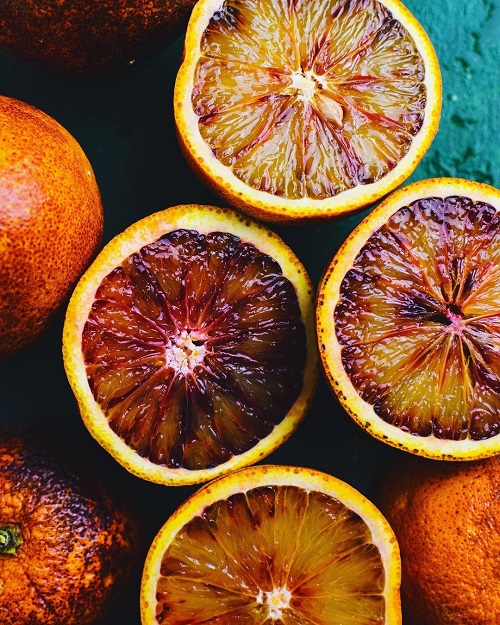
Botanical Name: Citrus sinensis
USDA Zones: 9-11
These oranges are as beautiful as they are delicious. They have a deep red flesh and a sweet, tangy flavor.
Learn about Growing oranges in pots here.
33. Blueberries
Botanical Name: Vaccinium sect. Cyanococcus
USDA Zones: 3-10
These little blue gems are not only delicious, but they’re also packed with antioxidants and vitamin C.
Check out our article on growing blueberries in pots here
34. Blue Tongue
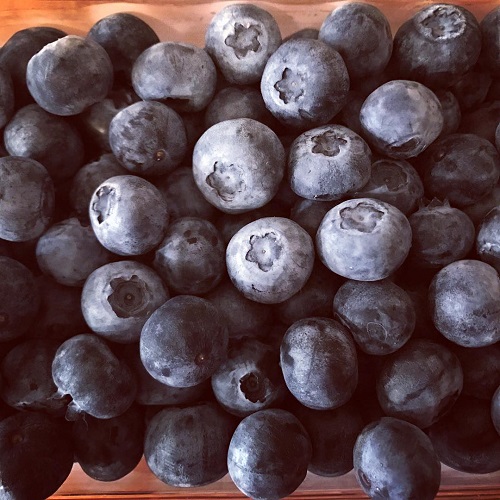
Botanical Name: Melastoma malabathricum
USDA Zones: 10-11
Blue tongue, also known as Indian rhododendron, this fruit is native to Southeast Asia and is used in traditional medicine. It has a sweet and tangy taste and is high in antioxidants.
35. Bolwarra Fruit

Botanical Name: Eupomatia laurina
USDA Zones: 9-11
This fruits that start with B is native to Australia and has a sweet, spicy taste. Bolwarra fruit grows best in subtropical and tropical regions.
36. Boquila Berries
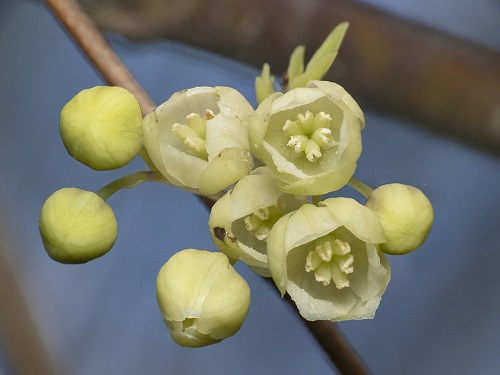
Botanical Name: Boquila trifoliolata
USDA Zones: 9-11
This fruit is native to Mexico and has a tart taste. It is used in traditional medicine and is also used as a flavoring in food and drinks.
37. Bottle Gourd
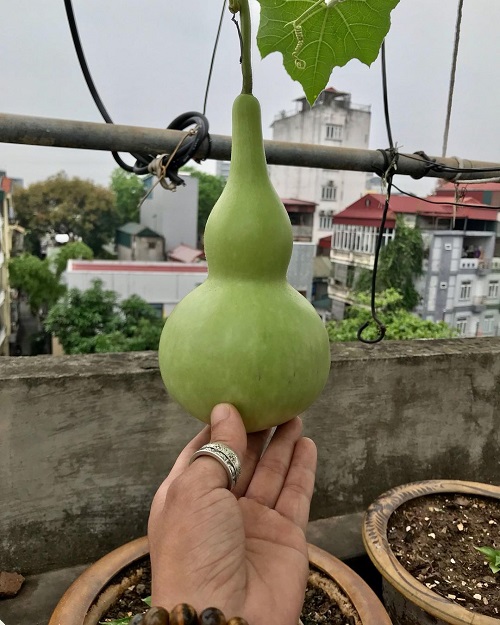
Botanical Name: Lagenaria siceraria
USDA Zones: 7-11
This fruit is native to Africa; yes, technically, bottle gourd is a fruit. It has a mild taste and is high in fiber. To grow it, you will need a warm and humid climate.
38. Boysenberries
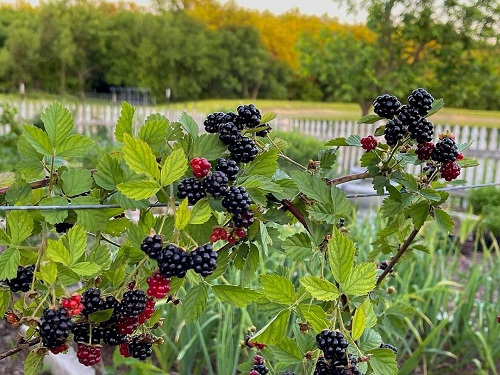
Botanical Name: Rubus ursinus × Rubus idaeus
USDA Zones: 5-9
If you’ve never tried a boysenberry before, you’re missing out. They’re a cross between a raspberry, blackberry, and loganberry, and they have a unique, sweet-tart flavor.
39. Bramble Fruit
Botanical Name: Rubus spp.
USDA Zones: 5-8
This fruit is a type of blackberry that has a sweet, tart taste. It is commonly grown in North America and Europe and thrives well in temperate climates.
40. Brazil Nuts
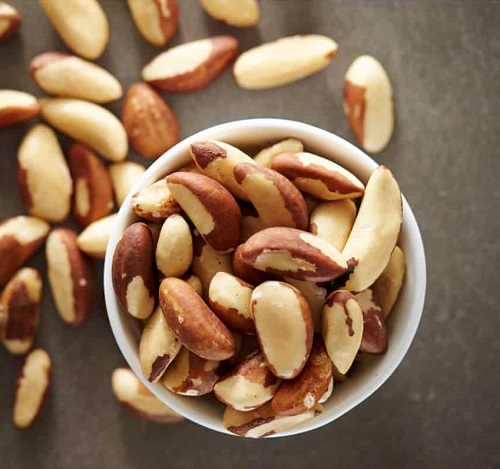
Botanical Name: Bertholletia excelsa
USDA Zones: 10-11
This nut is native to South America and is commonly eaten as a snack. It is high in healthy fats and protein. Brazil nuts grow best in tropical rainforest regions.
41. Brazilian Guava
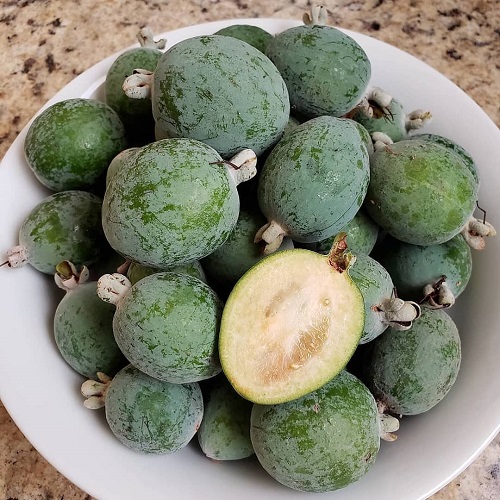
Botanical Name: Acca sellowiana
USDA Zones: 8-11
Brazilian guava, also known as pineapple guava, is next on the list of fruits that start with B. It is native to South America and has a sweet, tangy taste.
Here is how to Grow Guava in Pots
42. Breadfruit

Botanical Name: Artocarpus altilis
USDA Zones: 9-12
This tropical fruit is a staple in many Caribbean and Pacific Island cuisines. It has a starchy texture and a mild flavor that makes it a versatile ingredient.
43. Broadleaf Bramble
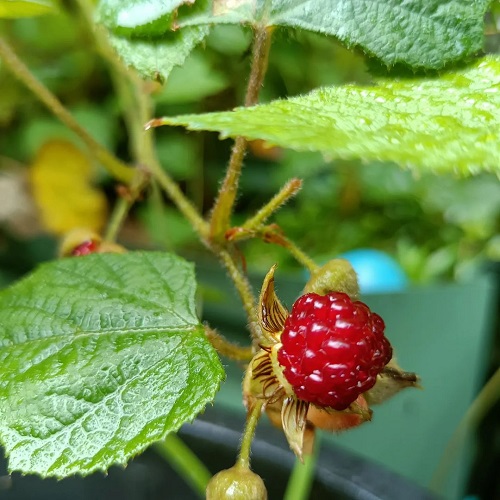
Botanical Name: Rubus moluccanus
USDA Zones: 5-8
This fruit shrub is native to North America and has a sweet, tart taste. Broadleaf brambles grow best in temperate climates or moist forests.
44. Brush Cherry
Botanical Name: Eugenia myrtifolia
USDA Zones: 9-11
This fruit is native to South America and has a sweet, tart taste. Brush cherry grows on bushes, and the plant does best in subtropical and tropical regions.
45. Buffaloberry
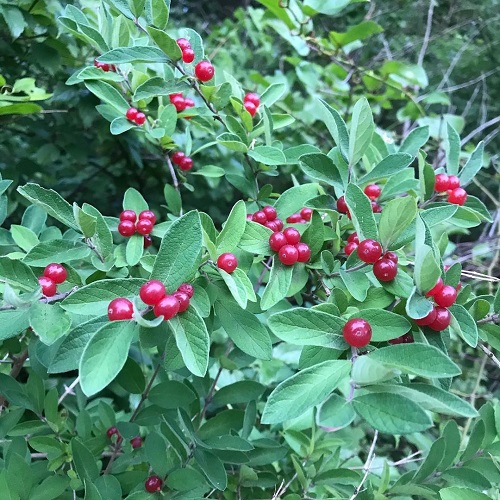
Botanical Name: Shepherdia argentea
USDA Zones: 3-8
This fruit is native to North America and has a tart taste. Buffaloberry grows best in dry and arid regions. The fruit’s color range from bright red to yellow.
46. Buddha’s Hand
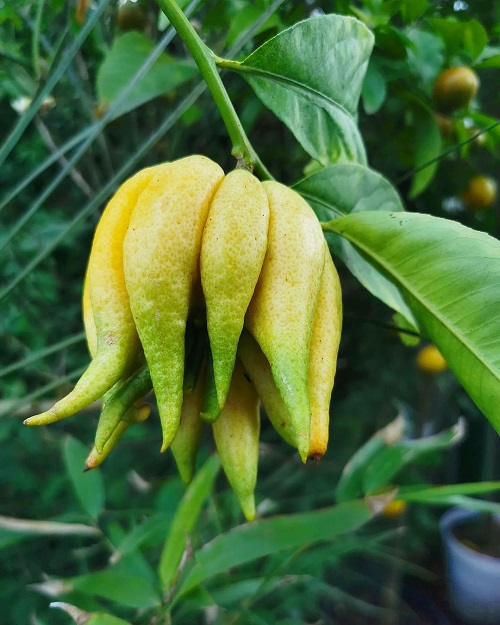
Botanical Name: Citrus medica var. sarcodactylis
USDA Zones: 9-11
This funky-looking fruit is often used as a decorative item, but it’s also edible. It is a citrus fruit that needs full sun and well-draining soil.
Here is How to Grow Buddha’s Hand
47. Burdekin Plum
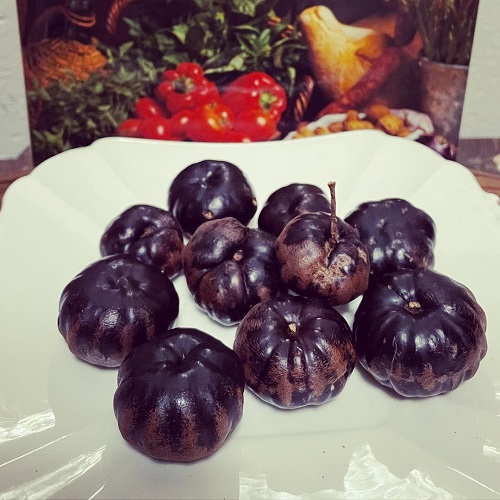
Botanical Name: Pleiogynium timorense
USDA Zones: 9-11
This fruit is native to Australia and has a sweet, tangy taste. The Burdekin plum trees produce clusters of yellowish-green fruits that turn reddish-brown when ripe.
48. Burmese Grape
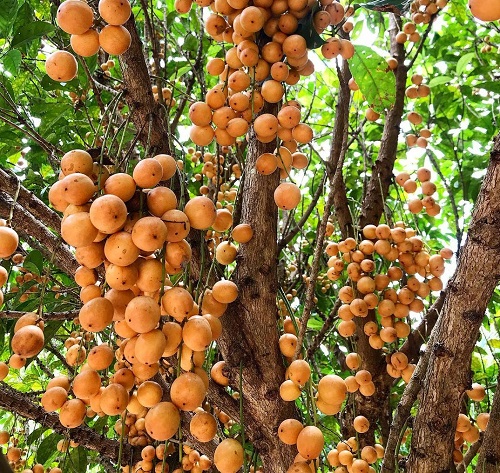
Botanical Name: Baccaurea ramiflora
USDA Zones: 10-12
Burmese grape, also known as “Naga Lingam” or “Maraeng” in some regions, this fruit is native to Southeast Asia and India.
Learn How to Grow Grapes in Pots & Care here
49. Bush Cherry
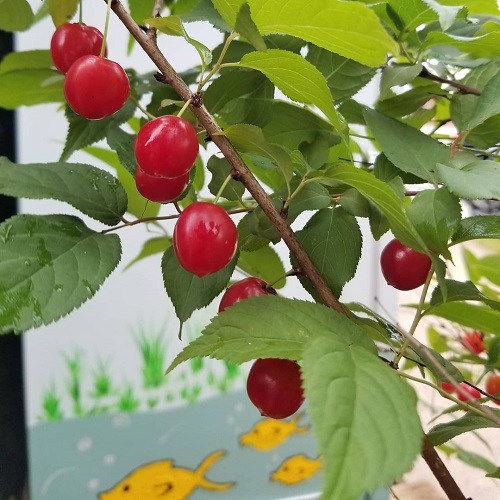
Botanical Name: Prunus japonica
USDA Zones: 5-8
Bush cherry, also known as Korean cherry or oriental cherry, is native to Japan, Korea, and China. The fruit has a sweet and sour taste and has a round shape.
50. Button Mangosteen
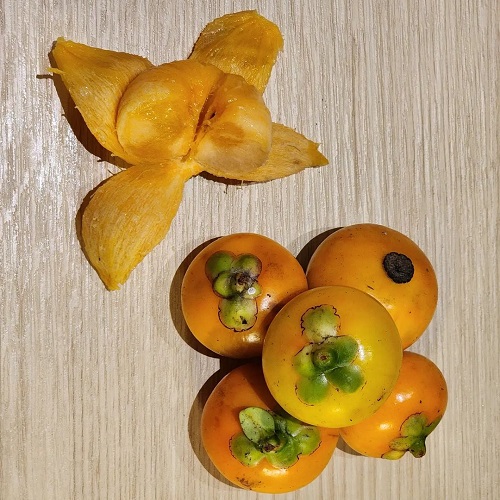
Botanical Name: Garcinia prainiana
USDA Zones: 10-12
Button Mangosteen, also known as “Maphuut” or “Cherapu” in some regions, this fruit is native to Southeast Asia and India. The fruit has a sweet and sour taste.

